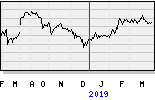
Packaging has an important role to play in sustainability as it functions to protect and reduce waste of products and raw materials as they move through the supply chains. To achieve this, the packaging must be holistically designed with both the product and its end use in mind so that the overall environmental performance is optimised. The packaging must also be: made from responsibly sourced materials; manufactured using energy-efficient production technologies; recoverable after use; sourced, manufactured, transported and recycled using renewable or efficient sources of energy.
When considering packaging and its sustainability, the packaging itself can’t be considered in isolation. Claude D’Amico, market development manager of Innovia, says sustainability has to apply to the product together with the packaging.
“New products, including their packaging, need to be planned with the full consideration of sustainability, starting with the raw materials, through to the manufacturing and usage efficiency as assessed by life cycle analysis, including the planned recovery of all resources embedded in the unused or waste portions of the product and its packaging,” he says.
Packaging material and its contribution to sustainability
Within the restricted view of the packaging itself, D’Amico says we are starting to see more emphasis on overall sustainability rather than just end-of-life options for the packaging. “Issues such as renewable resources utilised sustainably and the avoidance of GMO [genetically modified organisms] are gaining prominence,” he says.
Packaging materials, such as bioplastics made with a growing percentage of renewable resource, are experiencing a positive growth trend. According to European Bioplastics reports, global bioplastics production capacities are predicted to grow by more than 400% by 2018, with biobased, non-biodegradable plastics - such as biobased PE and biobased PET - gaining the most growth.
Steve Davies, director of corporate communications and public affairs, NatureWorks, says that tremendous strides made in the development of bioplastics and the applications in which they are used is an important macro trend in the ‘mainstreaming’ of bioplastics. He says: “Once regarded as ‘new-to-the-world’ materials, bioplastics are now entering their second decade of commercial-scale, world-class production, and with the ‘remaking’ of some mature plastic types in biobased variants - bio PET, for example - bioplastics and plastics have in a sense converged.
“Bioplastics are increasingly seen simply as plastics with additional environmental and end-of-life attributes. The functional properties and performance of the materials are discussed first and then, as appropriate, the ‘bio’ properties where they are relevant.
“This is a sea change from where the industry was two or three years ago,” says Davies.
D’Amico says:
read more on
http://www.sustainabilitymatters.net.au/articles/71732-Future-trends-for-packaging-and-its-role-in-sustainability
